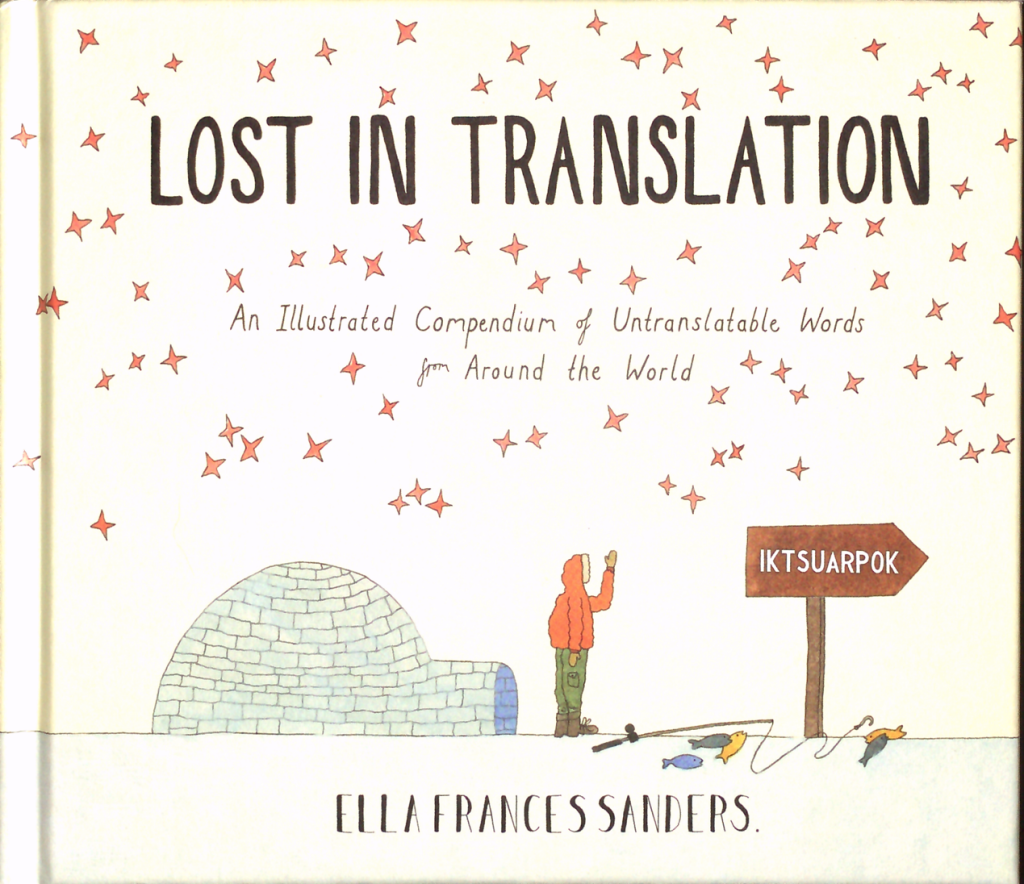“Lost in Translation: An Illustrated Compendium of Untranslatable Words”
Ella Frances Sanders
Ten Speed Press / Square Peg / Random House, UK 4 June 2015 / US 16 September 2014
Hardback, 19.9 x 17.2 cm (7.8 x 6.8 in), 112 pp., £10.00/$14.99
ISBN 978 0 224 10080 9
Available for Kindle (£6.65/$10.21) and in the iTunes Store (£6.99).
Further details and illustrations are on the author’s website
Dictionaries are full of words which cannot be expressed in exactly the same way in other languages. If acquisitive languages like English see the need, they will steal them, but there are plenty of gems which remain unplundered. This exquisite little book is a gathering of 52 of them, one for each week of the year, from ‘akihi (noun, Hawaiian, forgetting directions once you have been given them) to ya’aburnee (noun, Arabic, a morbid desire to die before your loved one).
Each word is acccorded a spread, with a short comment about the word on the left, and the definition on the right. Words which would originally have been expressed in a non-Roman alphabet are transliterated to make them more accessible to the English reader. The right page in each spread also contains an apposite and often sweet, whimsical and witty illustration. The author’s website contains several examples.
The choice of words is youthful, itinerant and thoroughly social, and fits the illustrative style. My favourite unborrowed words, like mittelschmerz (noun, German, mid-cycle pain of ovulation) and schadenfreude (noun, German, taking pleasure in the suffering of others), would have been far too functional and distressing.
The range of languages called on is also suitably impressive. There are several words from European languages, but endangered and unusual tongues are well represented too, including Wagiman (Australia), Yaghan/Yahgan (Tierra del Fuego), and (presumably Scottish) Gaelic.
It is hard to think of anyone who would not be delighted to receive this book as a gift, or who could resist the urge to pick it up and browse through its painted pages.
However, as it stands, that is as far as the book goes. Its pages are unnumbered and there is no index. If you do want to find out more about a word, your only course is to search for it online.
I would have loved a companion website in which I could hear how each word should be pronounced, perhaps with the aid of a spelling in the International Phonetic Alphabet, where I could see the word written if its language uses a non-Roman script, and be offered an additional link or two for more information about the language or word. Although this may seem churlish and prosaic, it is a shame to whet an appetite then leave the reader on their own.
I also note that this book was commissioned from a blog, in which the author had posted some example illustrations. Random House made an excellent catch, and I hope that they can persuade Ella Frances Sanders to share more of her delightful pictures in the future.

